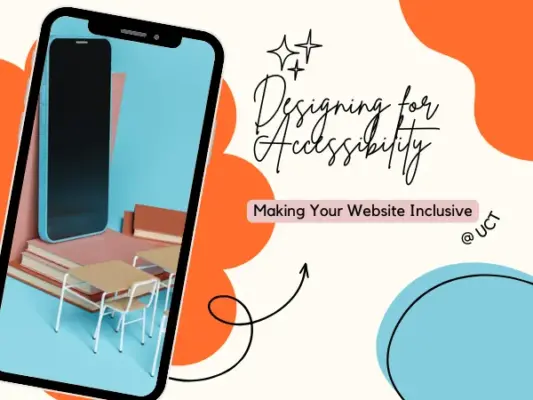
Introduction
In today’s digital world, ensuring your website is accessible to all users, including those with disabilities, is not just a legal requirement but a moral imperative. Accessibility in web design means creating a user experience that is usable by people of all abilities and disabilities. This blog explores key principles and practical tips for designing an accessible website, helping you make your online presence inclusive and user-friendly for everyone.
Why Accessibility Matters
Accessibility ensures that people with disabilities—such as those with visual, auditory, cognitive, or motor impairments—can effectively interact with your website. By prioritizing accessibility, you:
1. Expand Your Audience: Making your website accessible means reaching a broader audience, including individuals who rely on assistive technologies like screen readers or voice commands.
2. Enhance Usability: Accessible design often leads to a more intuitive and user-friendly experience for all users, not just those with disabilities.
3. Meet Legal Requirements: Many regions have legal standards and regulations for web accessibility, such as the Web Content Accessibility Guidelines (WCAG) and the Americans with Disabilities Act (ADA). Compliance helps you avoid legal issues and potential lawsuits.
4. Improve SEO: Accessible websites often have better structure and content, which can positively impact search engine optimization (SEO) and improve your site’s ranking.
Key Principles of Accessible Web Design
1. Perceivable
All users should be able to perceive the content on your website. This involves making sure that information is available in multiple formats:
– Text Alternatives: Provide text alternatives for non-text content, such as images, videos, and audio. Use descriptive alt text for images and ensure that videos have captions.
– Readable Content: Use clear and simple language. Ensure that text contrasts sufficiently with the background color to make it readable for users with visual impairments.
– Flexible Layouts: Design responsive layouts that work well on various screen sizes and devices, ensuring accessibility across desktops, tablets, and smartphones.
2. Operable
Users must be able to interact with your site using various input methods:
– Keyboard Navigation: Ensure that all interactive elements, such as forms, buttons, and links, can be navigated and operated using a keyboard alone. This is essential for users who cannot use a mouse.
– Focus Indicators: Provide clear visual indicators for focusable elements so that users can easily see where they are on the page.
– Accessible Forms: Label form fields clearly and provide error messages and instructions that are easy to understand.
3. Understandable
Content and interfaces should be easy to understand and use:
– Consistent Navigation: Use consistent navigation patterns and layouts across your website to help users find information easily.
– Clear Instructions: Provide clear instructions and feedback for user interactions, such as filling out forms or completing transactions.
– Error Handling: Ensure that error messages are descriptive and provide solutions or guidance on how to correct mistakes.
4. Robust
Your website should be compatible with current and future technologies:
– Semantic HTML: Use semantic HTML elements (e.g., headings, lists, landmarks) to provide a clear structure that assistive technologies can interpret.
– Compatibility Testing: Test your website with various assistive technologies and browsers to ensure compatibility and functionality.
– Continuous Improvement: Keep your website updated with the latest accessibility standards and best practices as technology evolves.
Practical Tips for Designing Accessible Websites
1. Use Accessible Color Schemes: Choose color combinations that provide high contrast between text and background. Tools like contrast checkers can help you ensure compliance with accessibility guidelines.
2. Implement ARIA Landmarks: Use Accessible Rich Internet Applications (ARIA) landmarks to define regions of the page (e.g., navigation, main content) for better screen reader navigation.
3. Design for Touch: Ensure that touch targets, such as buttons and links, are large enough to be easily tapped on touchscreens, with sufficient spacing to avoid accidental selections.
4. Test with Real Users: Conduct usability testing with individuals who have disabilities to identify and address real-world accessibility issues.
5. Provide Keyboard Shortcuts: Offer keyboard shortcuts for common actions to enhance navigation efficiency for users who rely on keyboards.
Conclusion
Designing for accessibility is essential for creating an inclusive online experience that welcomes all users, regardless of their abilities. By adhering to accessibility principles and implementing best practices, you can make your website more usable, reach a wider audience, and comply with legal requirements. Remember, accessibility is not a one-time task but an ongoing commitment to improving and refining your website to ensure it remains inclusive and user-friendly for everyone.